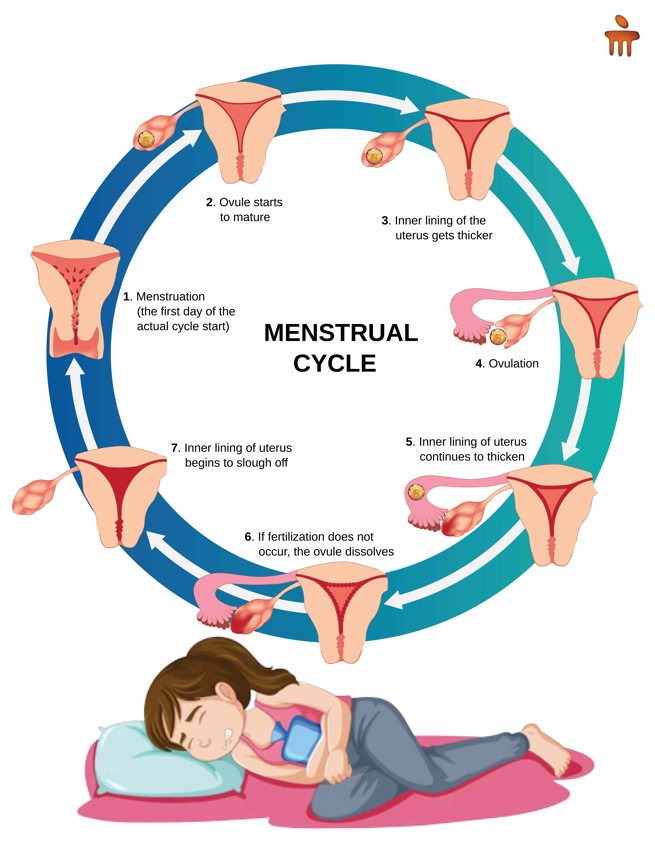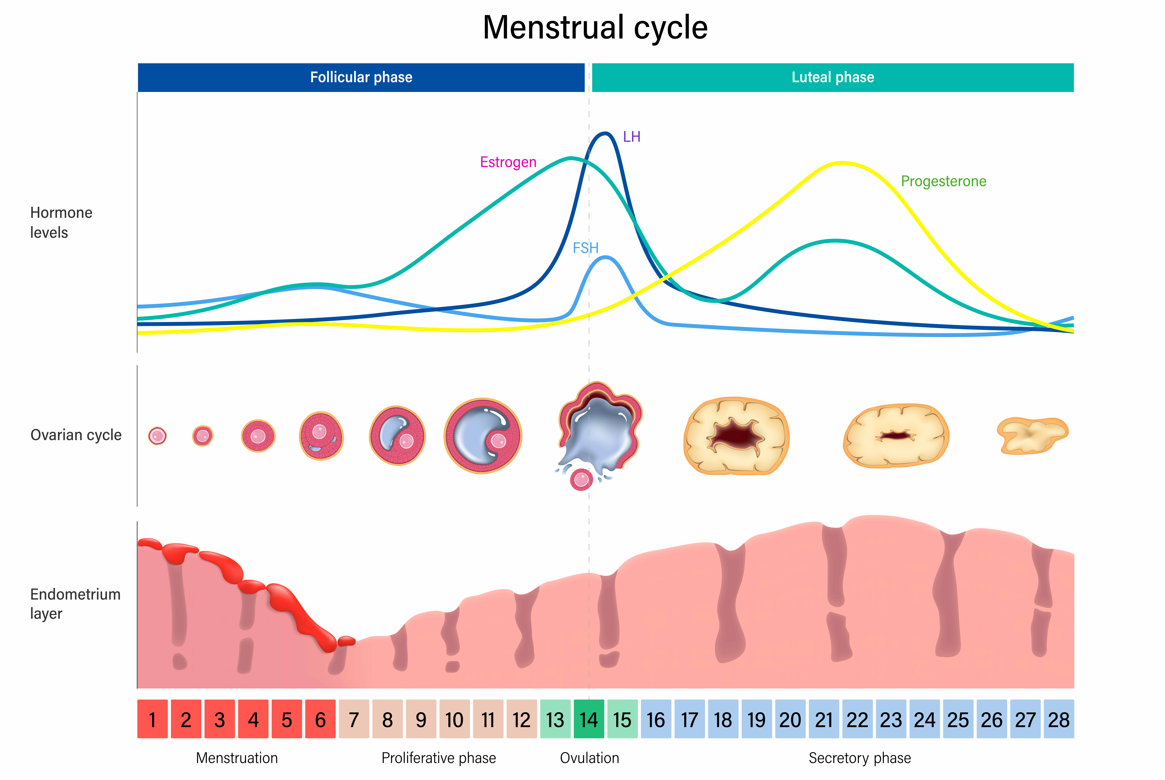
The menstrual cycle is the beginning phase when women start to menstruate, preparing the body for pregnancy. This is the period when the lining of the uterus is shredded down. This cycle is the major part of the reproductive system of the woman’s body which helps them to get prepared for the possible pregnancy. Commonly, the menstrual cycle lasts between 24-38 days. If you have specific concerns or questions about your menstrual cycle, consulting with the best obstetrician in Kolkata can provide valuable insights and guidance.
For various reasons, one may be curious to understand the menstrual cycle. It is possible that the menstrual cycle among women may change, and the reason for its change should likely be known by every woman. Let us discuss more details about the menstrual cycle.

What is the menstrual cycle?
A menstrual cycle is defined as the time between the first day of the period and the first day of the next period. It lasts 28 to 29 days on average, showing little variation between 20-40 days; however, each woman's cycle is unique. It involves the natural changes occurring in a woman’s body every month to prepare for the possibility of pregnancy. Menstruation begins at puberty and ends at menopause.
The menstrual cycle most commonly begins at puberty among women, commonly belonging to the age group of 8-15 years (an average age of 12 years). It mostly begins after two years of breast and pubic hair development at puberty.
Phases of menstrual cycle

The menstrual cycle is divided into four phases of which details are provided below:
-
Menstruation
It is most commonly known as a period. It is the process of removal of the uterine wall's internal lining as well as other bodily secretions through the vagina. It normally lasts three to seven days, however, this might vary from month to month and depending on the specific woman.
-
The Follicular Phase
This phase begins with menstruation and ends with ovulation. The pituitary gland (located at the base of the brain) releases a follicle (cyst) stimulating hormone during this phase. This hormone causes the ovary to create 10 to 20 follicles, each of which contains an immature egg. These follicles release the hormone estrogen, which thickens the endometrial lining in preparation for the fertilised egg. Commonly, just one follicle continues to grow and gets to the ovarian surface, while the rest follicles fade and are absorbed back into the body.
-
Ovulation
Ovulation occurs between 12 and 16 days before the next period, but not always in the middle of the cycle. Ovulation is the process of development of a mature egg by one of the ovaries. When estrogen is released during the follicular phase, the brain produces gonadotrophin-releasing hormone, which stimulates the pituitary gland to produce more luteinising hormone (luteotropic hormone). The mature egg is extracted from the follicle (cyst) and transported from the ovary to the fallopian tube by this process. If fertilisation does not take place during this period, the egg will travel to the uterus and disintegrate within 6 to 24 hours.
-
The Luteal Phase
During the luteal phase, the follicle from which the mature egg bursts (now known as the yellow body of the ovary or corpus luteum) discharges a substantial amount of progesterone and some estrogen, playing a critical role in the thickening and maintenance of the endometrial lining. This hormonal activity is vital for a successful implantation in case of fertilisation. Seeking appropriate medical guidance from the best gynecologist hospital in Kolkata can provide comprehensive care and support throughout this phase, ensuring a woman's reproductive health is closely monitored and any concerns are addressed promptly. If there is no fertilisation, the yellow body dissolves and progesterone levels fall, making the lining fragile. The lining then falls away, and the menstrual cycle begins again.
Hormonal Changes During Different Phases of the Menstrual Cycle
The different phases of the menstrual cycle bring about some hormonal changes in the body. During the luteal phase, some psychological and physical changes may occur. These changes occur due to a sudden reduction in progesterone and estrogen levels. However, these disappear within a few days following menstruation when hormone levels return to normal. Some of the changes are illustrated below:
Physical Changes:
-
Breast tenderness and swelling
-
Diarrhoea or constipation
-
Cramps
-
Headaches and backaches
-
Fluid retention
-
Fatigue and vertigo
-
Intolerance of noise and bright lights
-
Acne.
Below are some physiological changes that occur due to hormonal changes:
-
Irritability and aggressive behaviour
-
Sleeping difficulty
-
Appetite changes
-
Difficulty in concentrating and thinking
-
Anxiety and stress
-
Mood swings
-
Depression or sadness.
Common Menstrual Disorders
Some of the common menstrual disorders include:
-
Premenstrual Syndrome (PMS): In women who are at risk, hormonal events before their period can cause a variety of adverse symptoms such as fluid retention, headaches, exhaustion, and irritability. Exercise and food adjustments are two treatment strategies.
-
Dysmenorrhoea: This is also known as an unpleasant or painful period. Some hormones cause the uterus to contract more forcefully than necessary to loosen its lining. The oral contraceptive pill and painkillers are available as treatments.
-
Heavy Menstrual Bleeding: It was previously known as menorrhagia. It may result in anaemia if not treated properly. The blood flow regulation in this case is controlled by using oral contraceptives and hormonal intrauterine devices (IUDs).
-
Amenorrhoea: It is the condition when no menstrual cycle phases occur in women. It is considered an abnormal condition, except for conditions such as puberty, pregnancy, lactation and post-menopause. The possible causes for its occurrence include over-exercising and either less or more body weight.





















 4 Min Read
4 Min Read


















